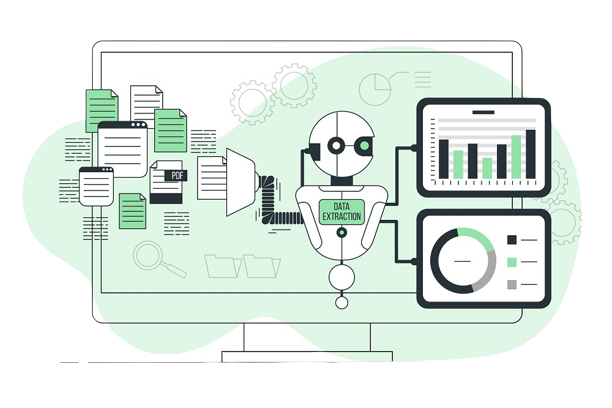In the dynamic landscape of demand forecasting, artificial intelligence (AI) and machine learning (ML) are emerging as transformative forces. This blog post explores the evolution of demand forecasting through AI-driven methodologies and ML-based forecasting, shedding light on the intricacies of these advanced approaches and their synergistic impact on the future of predicting market demands.
The Rise of AI-Driven Demand Forecasting
Understanding AI-Driven Demand Forecasting: A Paradigm Shift
AI-driven demand forecasting represents a paradigm shift from traditional methods. Unlike rule-based systems, AI employs sophisticated algorithms that can decipher complex patterns within vast datasets. This approach goes beyond merely analyzing historical data, incorporating real-time information, and adapting to evolving market dynamics.
Advanced Algorithms in Action
-
Neural Networks:
Neural networks, a subset of AI, emulate the human brain’s learning process. In demand forecasting, these networks can recognize intricate patterns within data, enabling more accurate predictions by considering non-linear relationships and dependencies.
-
Deep Learning:
Deep learning, a specialized form of machine learning, utilizes multiple layers of artificial neural networks to extract hierarchical features from data. In demand forecasting, deep learning models excel at capturing subtle nuances and adapting to changing patterns.
Benefits of AI-Driven Demand Forecasting
-
Enhanced Accuracy:
AI-driven forecasting delivers enhanced accuracy by discerning patterns that might be overlooked by traditional methods. This precision minimizes forecasting errors and optimizes inventory management.
-
Real-time Adaptability:
The dynamic nature of markets demands real-time adaptability. AI-driven systems continuously learn from new data, allowing businesses to make swift adjustments based on the latest market conditions.
-
Prediction of Complex Trends:
Complex market trends, influenced by various factors, are better predicted through AI-driven forecasting. From economic shifts to evolving consumer behaviors, AI can analyze and interpret these complexities.
ML-Based Forecasting: Precision in Predictions
The Essence of ML-Based Forecasting
Machine learning-based forecasting leverages algorithms that enable systems to learn and improve from experience. This approach involves training models on historical data, enabling them to make predictions based on learned patterns and relationships.
Key Components of ML-Based Forecasting
-
Training Data Sets:
ML-based forecasting starts with training data sets. Historical information, including sales data, market trends, and external factors, is fed into the system to enable the model to recognize patterns.
-
Feature Selection:
ML models identify relevant features or variables that significantly impact demand. This feature selection process ensures that the model focuses on the most influential factors for accurate predictions.
Advantages of ML-Based Forecasting
-
Flexibility in Data Handling:
ML models can handle diverse data types, from numerical values to categorical data and even unstructured data like social media sentiment. This flexibility enables a more comprehensive analysis of factors influencing demand.
-
Adaptability to Changing Conditions:
ML models adapt to changing conditions by learning from new data. This adaptability is crucial in dynamic markets where demand patterns can shift rapidly.
The Synergy: AI-Driven and ML-Based Forecasting
Unified Precision in Predictions
The synergy between AI-driven and ML-based forecasting creates a unified framework for precision in predictions. AI’s ability to recognize intricate patterns complements ML’s capacity to learn and adapt to changing conditions. This collaboration results in a more robust and responsive forecasting system.
Optimizing Forecasting Strategies
-
Comprehensive Data Utilization:
The combination of AI and ML allows businesses to comprehensively utilize diverse data sources, from structured datasets to unstructured information like customer reviews and social media sentiment.
-
Continuous Learning and Improvement:
The unified approach of AI and ML fosters continuous learning. The system evolves with each new data point, improving its predictive capabilities over time.
Enhancing Strategic Decision-Making with AI-Driven Insights
Harnessing AI-Driven Insights for Informed Decisions
AI-driven demand forecasting not only refines predictions but also offers valuable insights that elevate strategic decision-making. This section explores how businesses can leverage these insights to make informed and forward-thinking decisions.
-
Predictive Analytics in Strategy:
AI-driven insights extend beyond forecasting, offering predictive analytics that empower businesses to anticipate market trends. This proactive approach enables strategic decision-makers to align their actions with forecasted demand, optimizing resources and maximizing market opportunities.
-
Market Segmentation and Targeting:
AI can discern nuanced patterns within diverse consumer segments. By understanding the unique demands of different market segments, businesses can tailor their strategies, refine product offerings, and enhance marketing campaigns for more effective customer targeting.
Ensuring Data Security and Ethical AI Practices
Safeguarding Data Integrity and Privacy in AI-Driven Forecasting
While the benefits of AI-driven forecasting are immense, businesses must prioritize data security and adhere to ethical AI practices. This section sheds light on the importance of safeguarding data integrity and ensuring that AI applications align with ethical standards.
-
Data Encryption and Compliance:
Protecting sensitive data is paramount. Implementing robust encryption measures and ensuring compliance with data protection regulations safeguard businesses from potential breaches and legal ramifications.
-
Transparency in AI Decision-Making:
Ethical AI involves transparency in decision-making processes. Businesses should ensure that AI models are explainable, allowing stakeholders to understand how predictions are made. This transparency builds trust and addresses concerns related to the perceived “black box” nature of AI systems.
Conclusion: Pioneering the Future of Demand Forecasting
In conclusion, the future of demand forecasting is marked by the transformative synergy of AI-driven methodologies and ML-based approaches. Businesses that embrace these advanced technologies gain a competitive edge in predicting and meeting market demands with unprecedented accuracy and adaptability.
As we pioneer into this future, the collaboration between AI and ML becomes not just a technological evolution but a strategic imperative. The journey towards precision in demand forecasting is propelled by the dynamic interplay of these advanced methodologies, opening new horizons for businesses seeking to thrive in an era of constant change and complexity.



